Here in the UK, we have some undeniably delicious dishes (even if the rest of the world fails to see that). However, it’s important to broaden your horizons when possible, trying new cuisines, because who knows when you might find your new favorite. So, here are 20 unusual eats worth trying at least once in your life.
Hákarl: Iceland’s Fermented Shark
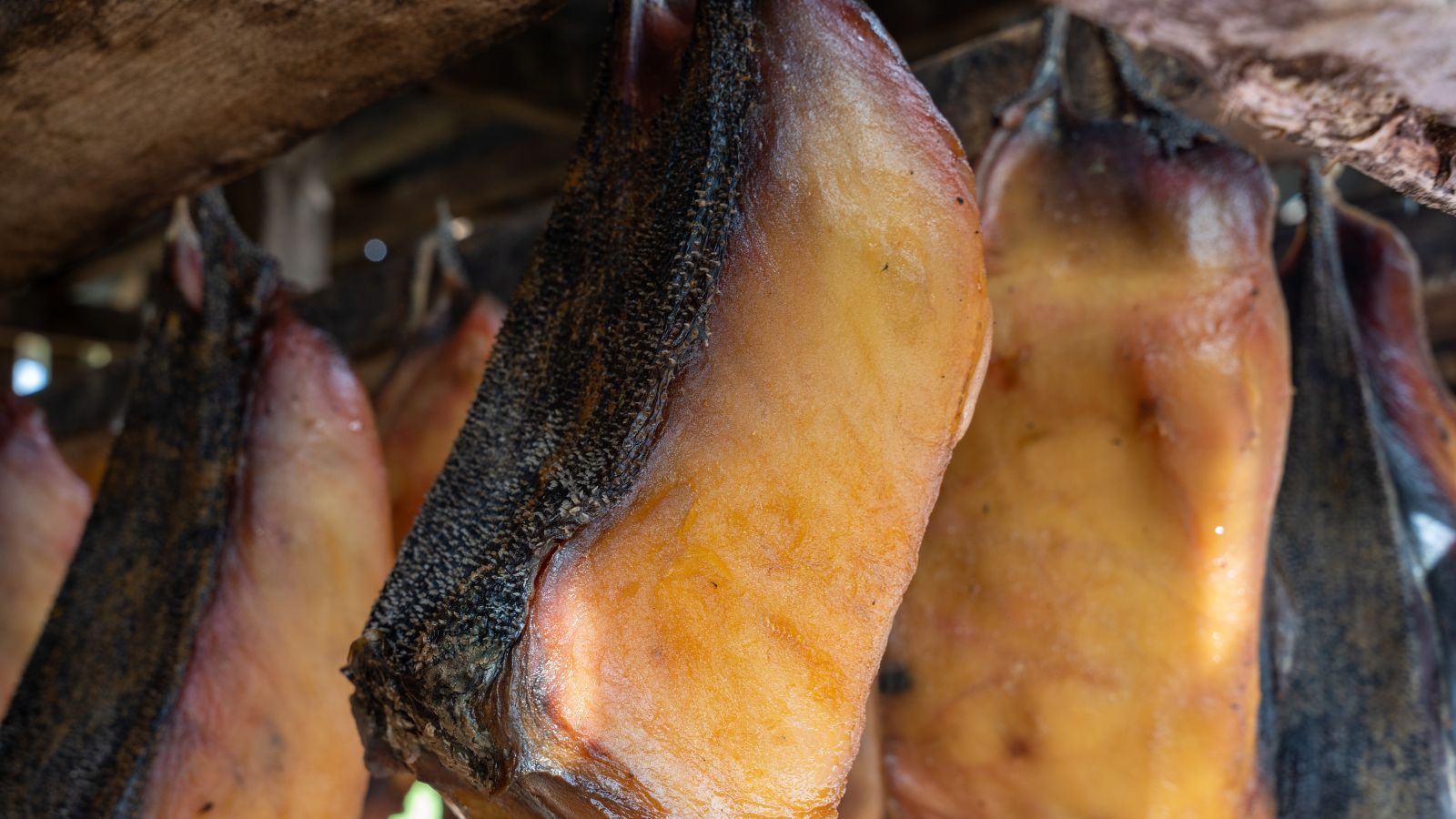
While it might not sound particularly appetizing, many people love Hákarl, a traditional Icelandic dish made by fermenting and drying Greenland shark. As Arctic Adventures explains, the result is a strong, ammonia-scented delicacy with a pungent taste. It’s a dish that truly tests your taste buds, so it’s not for everyone but is certainly worth a try.
Escamoles: Mexico’s Insect Caviar
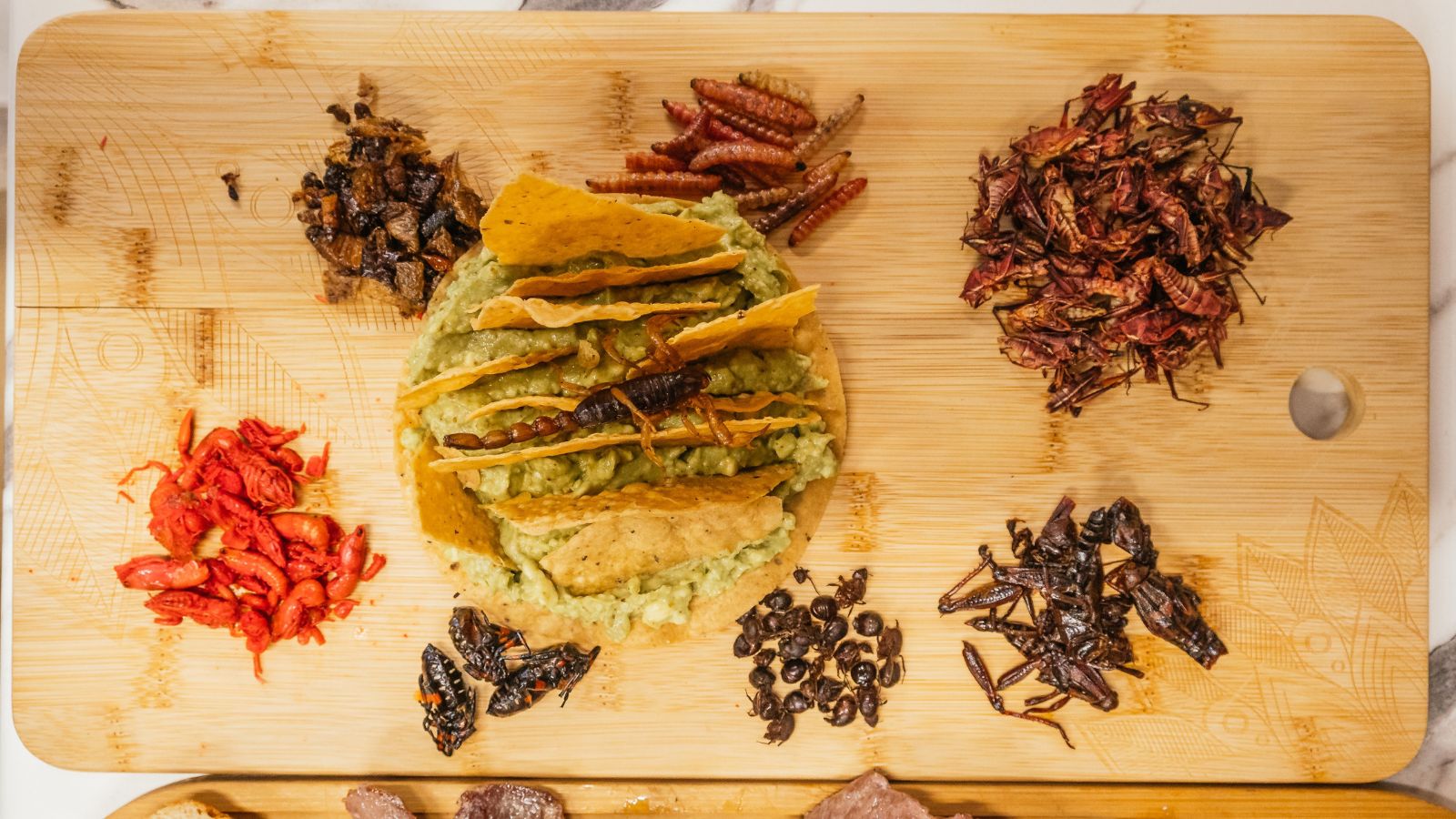
In Mexico, escamoles are ant larvae harvested from agave plant roots, which have a texture that is strangely similar to cottage cheese. It’s accompanied by a buttery, nutty flavor, and is often served in tacos or alongside guacamole, providing a unique twist on traditional Mexican cuisine. Trust us–it’s tastier than it sounds.
Balut: A Fertilized Egg Delicacy from the Philippines
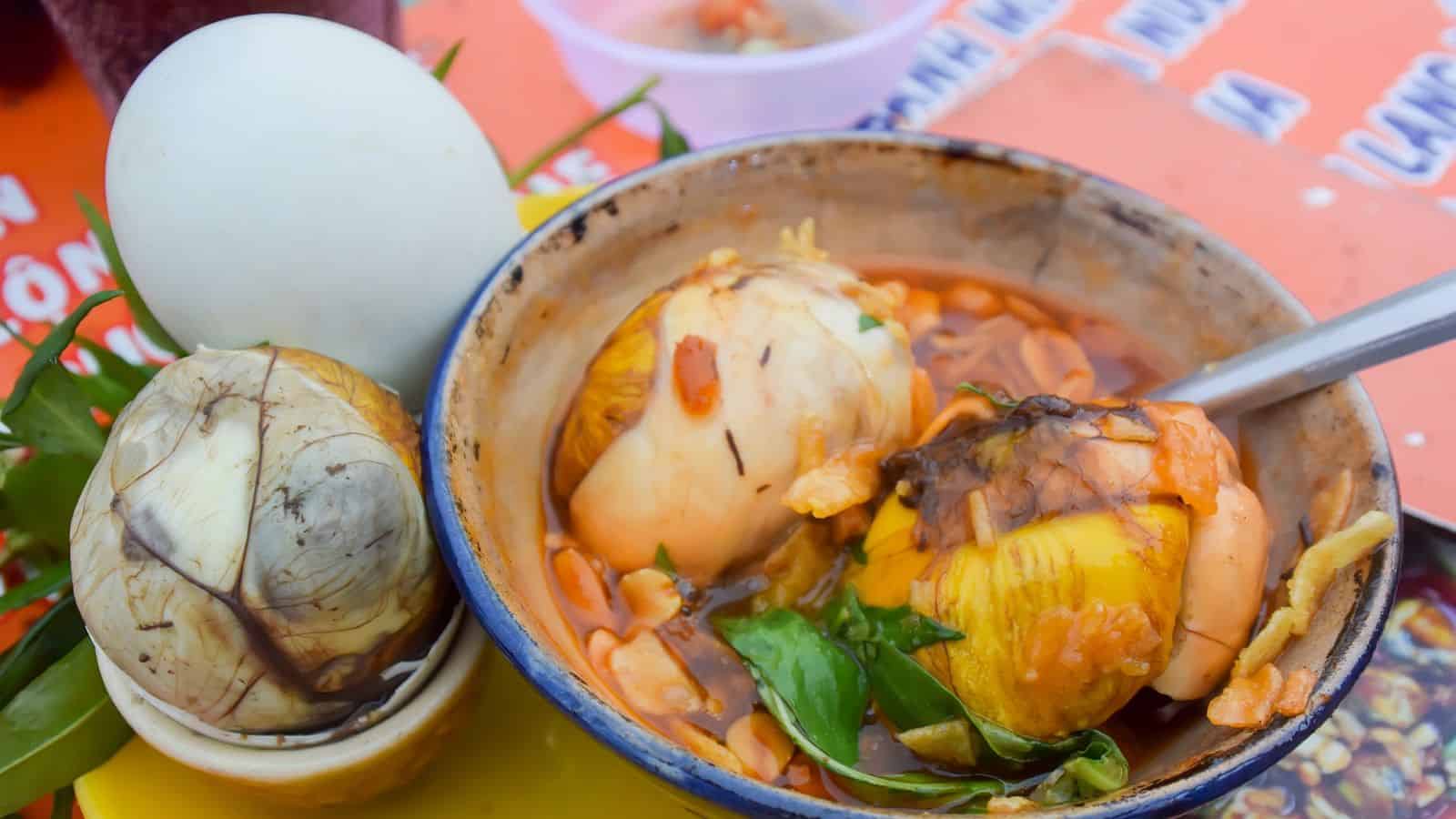
Arguably, one of the more disturbing cuisines on this list is balut, a semi-fertilized duck egg containing a partially developed embryo that is popular as a street food in the Philippines. Eaten straight from the shell, it combines the textures of creamy yolk and tender duckling, creating a rich, savory taste experience that’s beloved by many locals. Understandably, though, it’s all a bit too much for most tourists.
Casu Marzu: Sardinia’s Maggot Cheese

Moving on to yet another disgusting-sounding dish, Casu Marzu is a Sardinian cheese famous for its unique fermentation process, which involves live maggots. These larvae help soften the cheese, resulting in a creamy texture with a sharp, tangy flavor. Consuming this cheese is a rare and bold culinary adventure for those daring enough to try it, but we’d forgive you if you choose to give it a miss.
Surströmming: Sweden’s Fermented Herring
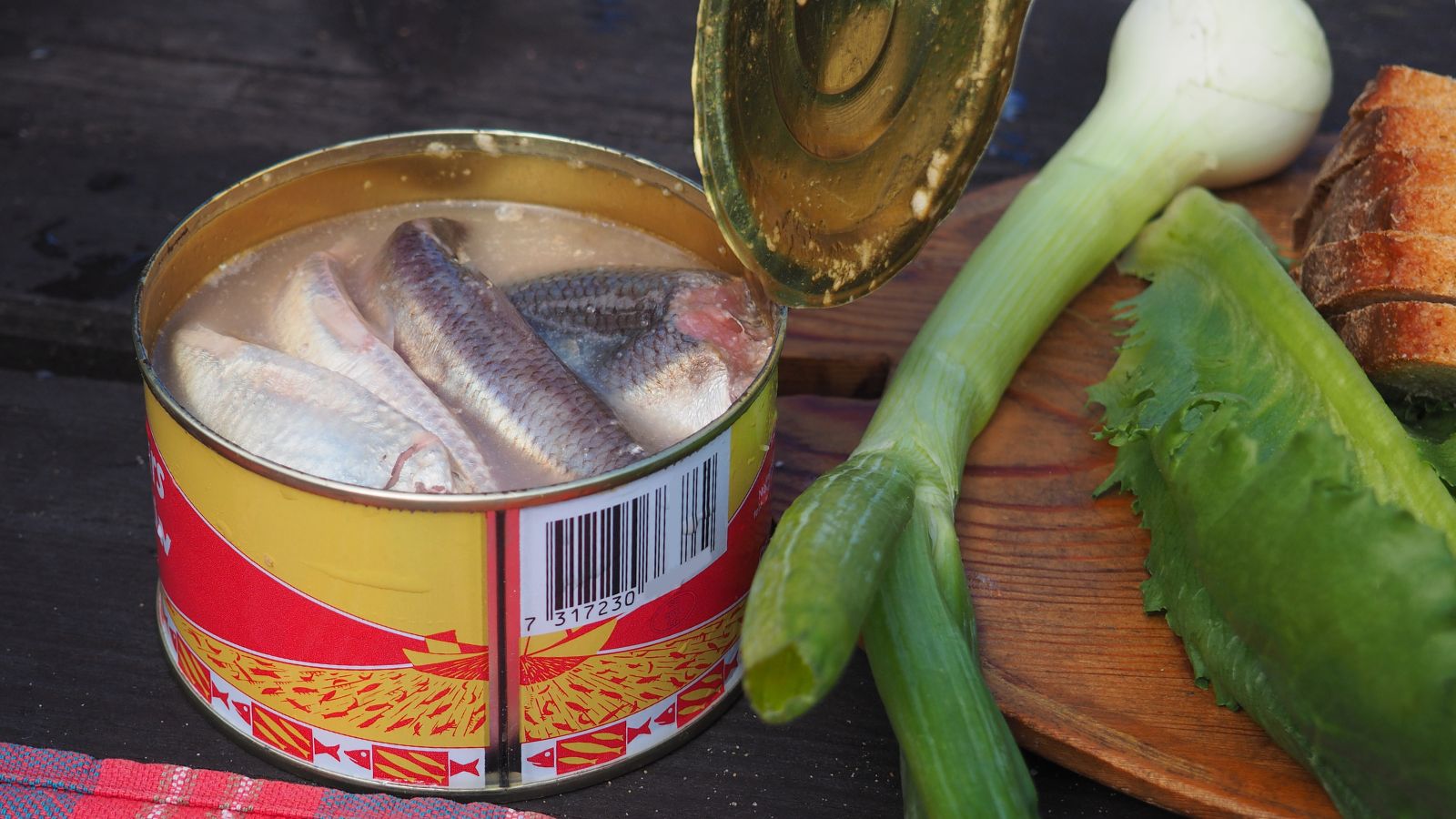
Surströmming is a Swedish delicacy known for its intense odor due to the fact that it is essentially fermented herring. It’s typically enjoyed with thin bread, onions, and potatoes, and despite its infamous smell, the fish offers a surprisingly mild, savory flavor that reflects the traditional tastes of Swedish cuisine. It’s definitely one of the more palatable dishes on this list.
Sannakji: Live Octopus from Korea
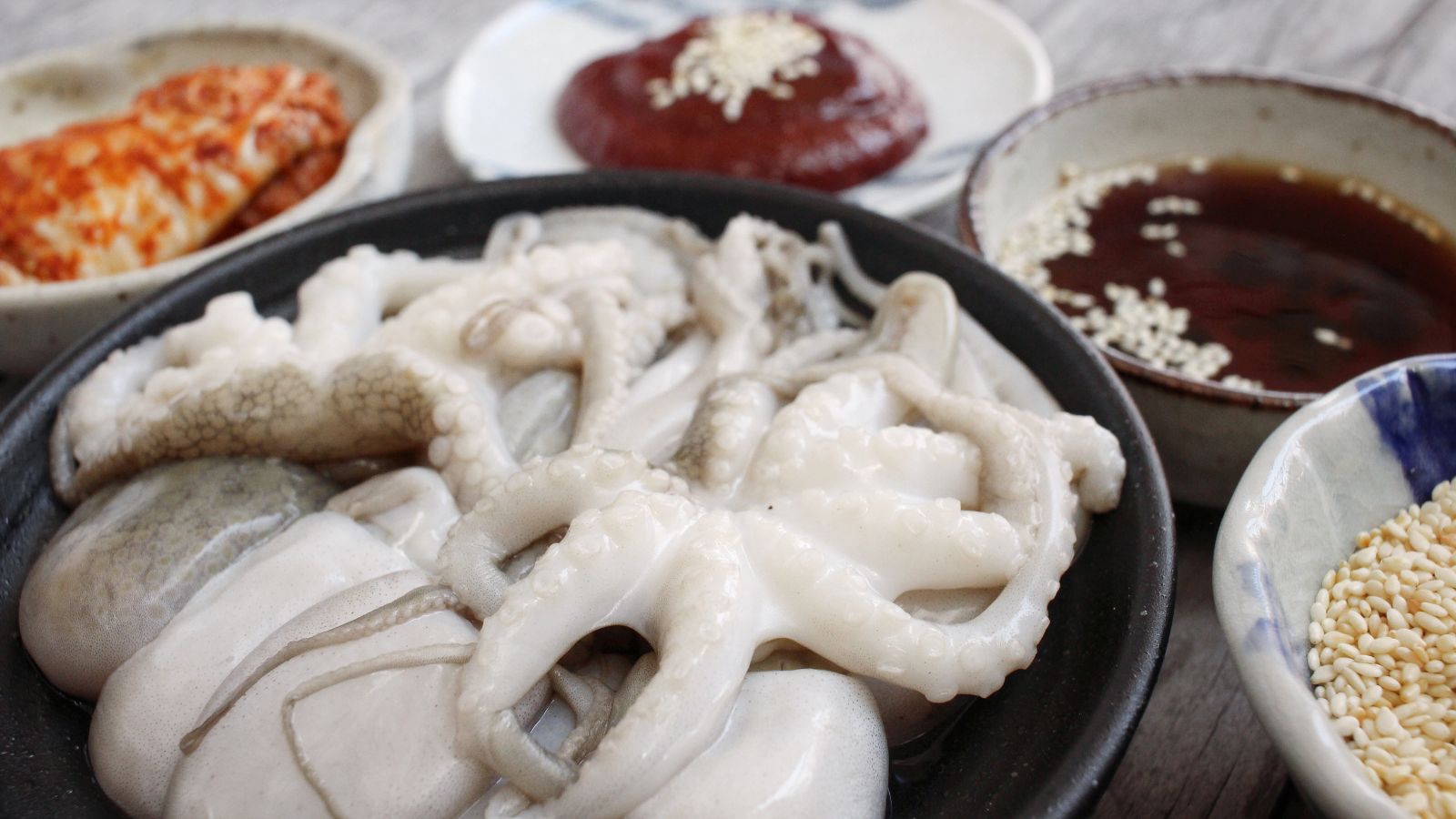
If you head to Korea, you may get the chance to try Sannakji, a dish consisting of live octopus cut into small pieces that continue to wriggle on the plate. The chewy texture and fresh, briny flavor make it a thrilling and memorable experience. However, eating sannakji requires careful chewing to avoid the tentacle’s suction cups, which isn’t particularly reassuring.
Mopane Worms: A Protein-Rich Snack from Southern Africa
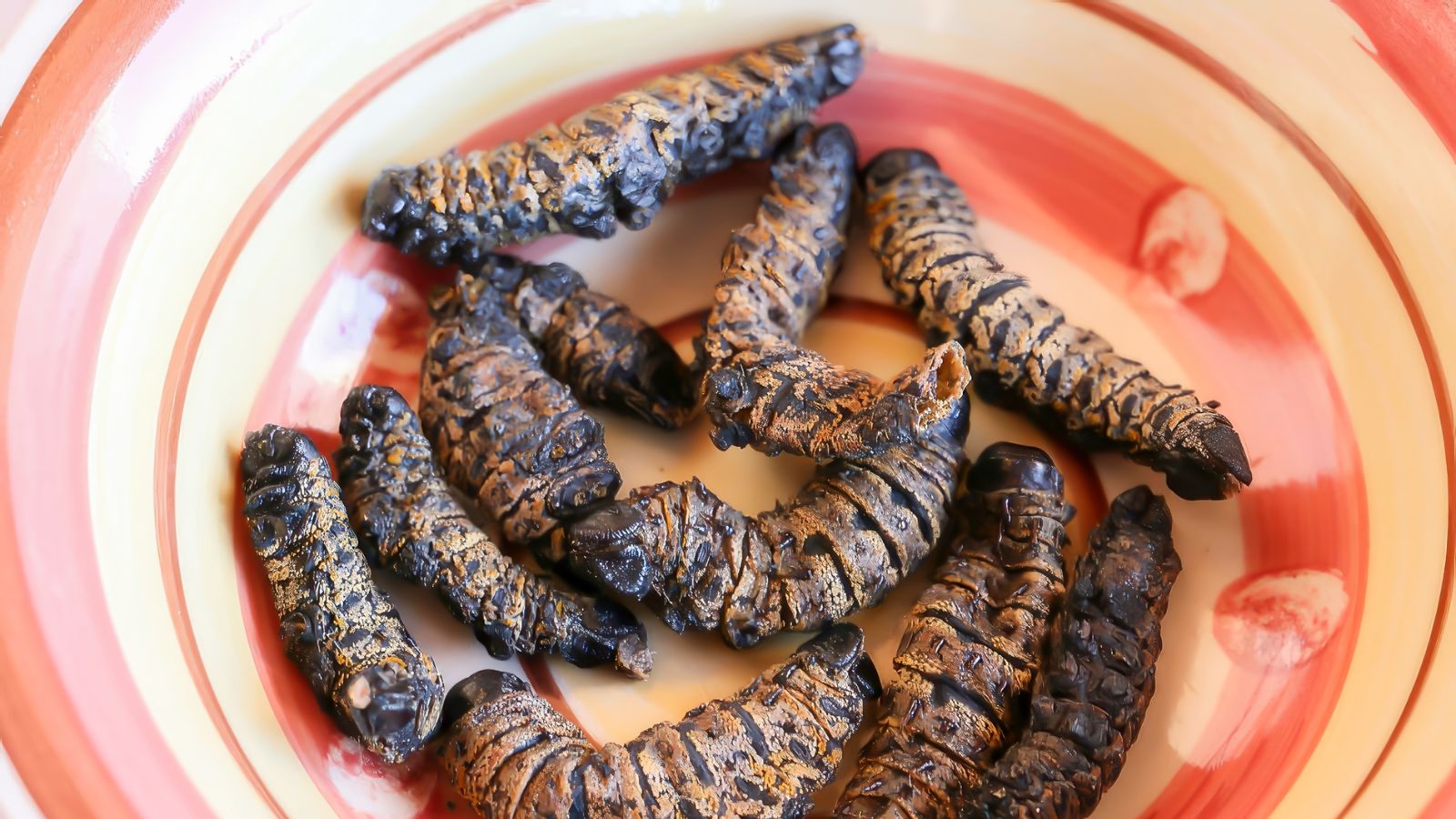
In many Southern African countries, mopane worms are very popular, which are essentially caterpillars that are dried or fried and eaten as a snack. They have a crunchy texture and an earthy, slightly nutty flavor, and they’re super rich in protein, making for an important food source in many communities.
Century Egg: China’s Preserved Delicacy
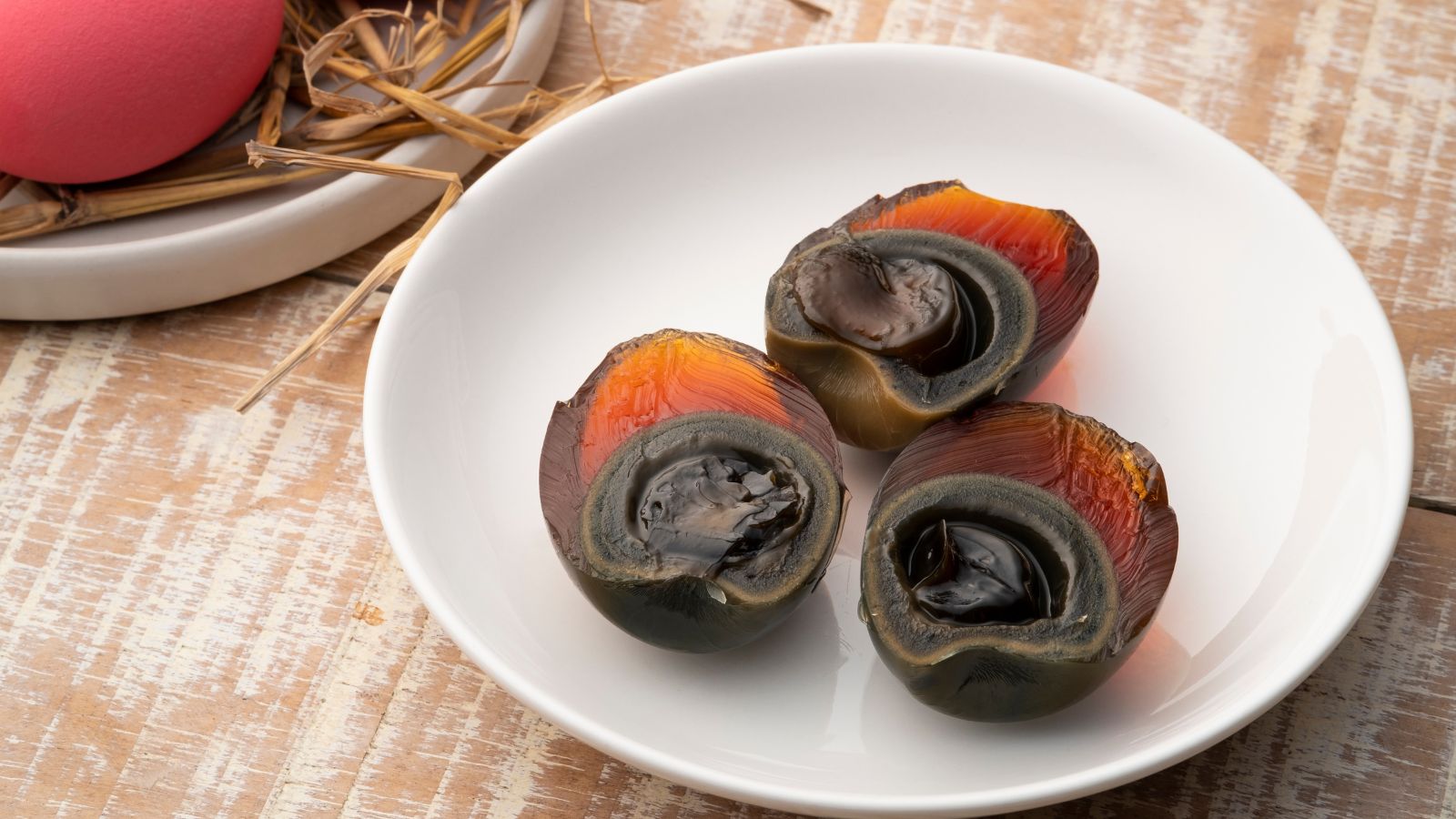
Social media has recently put century eggs in the spotlight, which are preserved duck, chicken, or quail eggs, aged in a mixture of clay, ash, and salt. This Chinese preservation process turns the egg white into a dark, jelly-like substance and the yolk into a creamy, pungent center, resulting in a dish known for its complex, savory flavor.
Durian: Southeast Asia’s Controversial Fruit
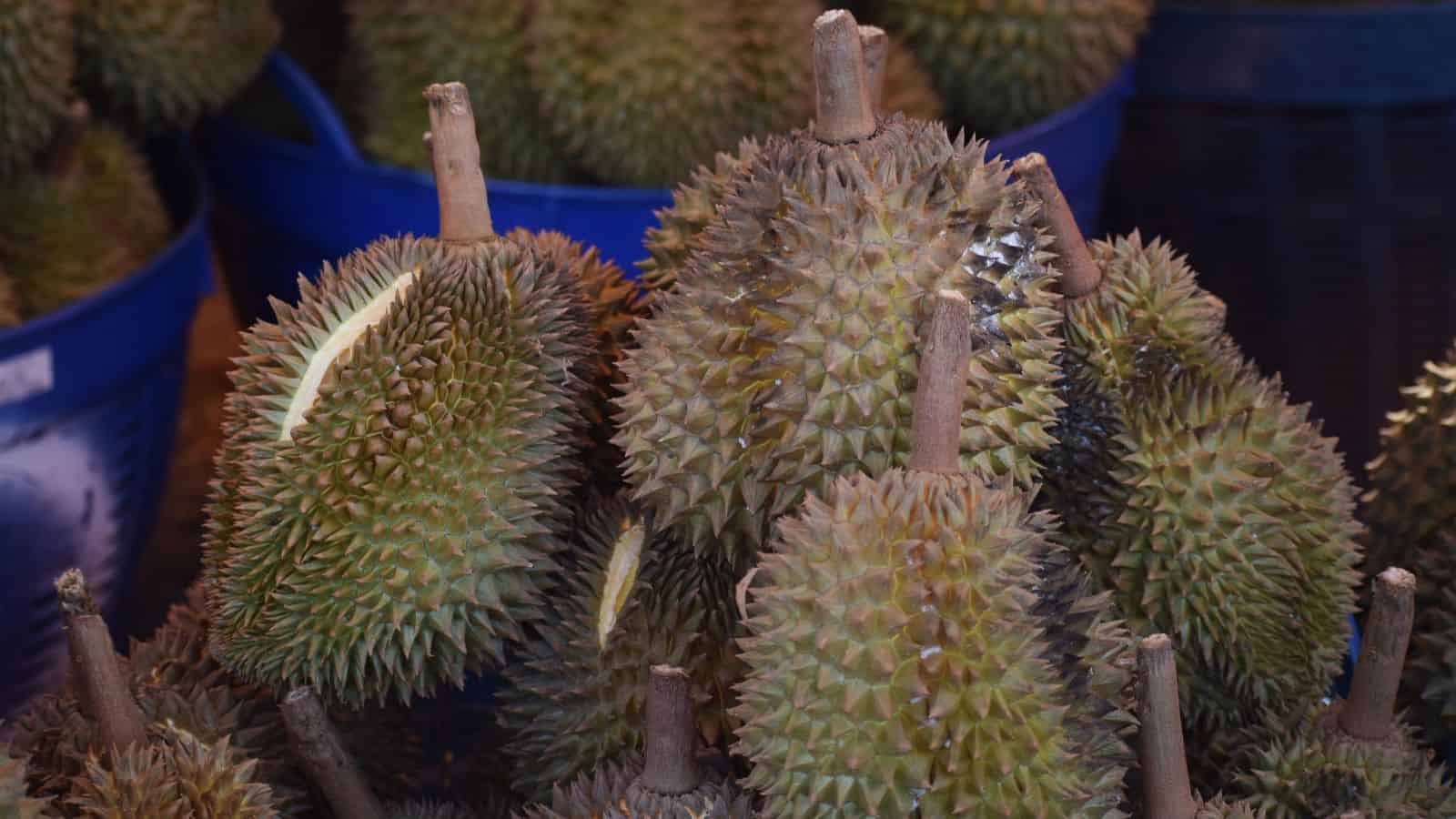
Anyone who has visited Southeast Asia will know all about the durian fruit, often called the “king of fruits.” It’s famous for its powerful odor, which many compare to rotten onions. However, beneath its spiky shell lies a custard-like flesh that’s sweet and creamy, making it a polarizing treat with devoted fans and equally passionate detractors.
Huitlacoche: Mexico’s Corn Fungus
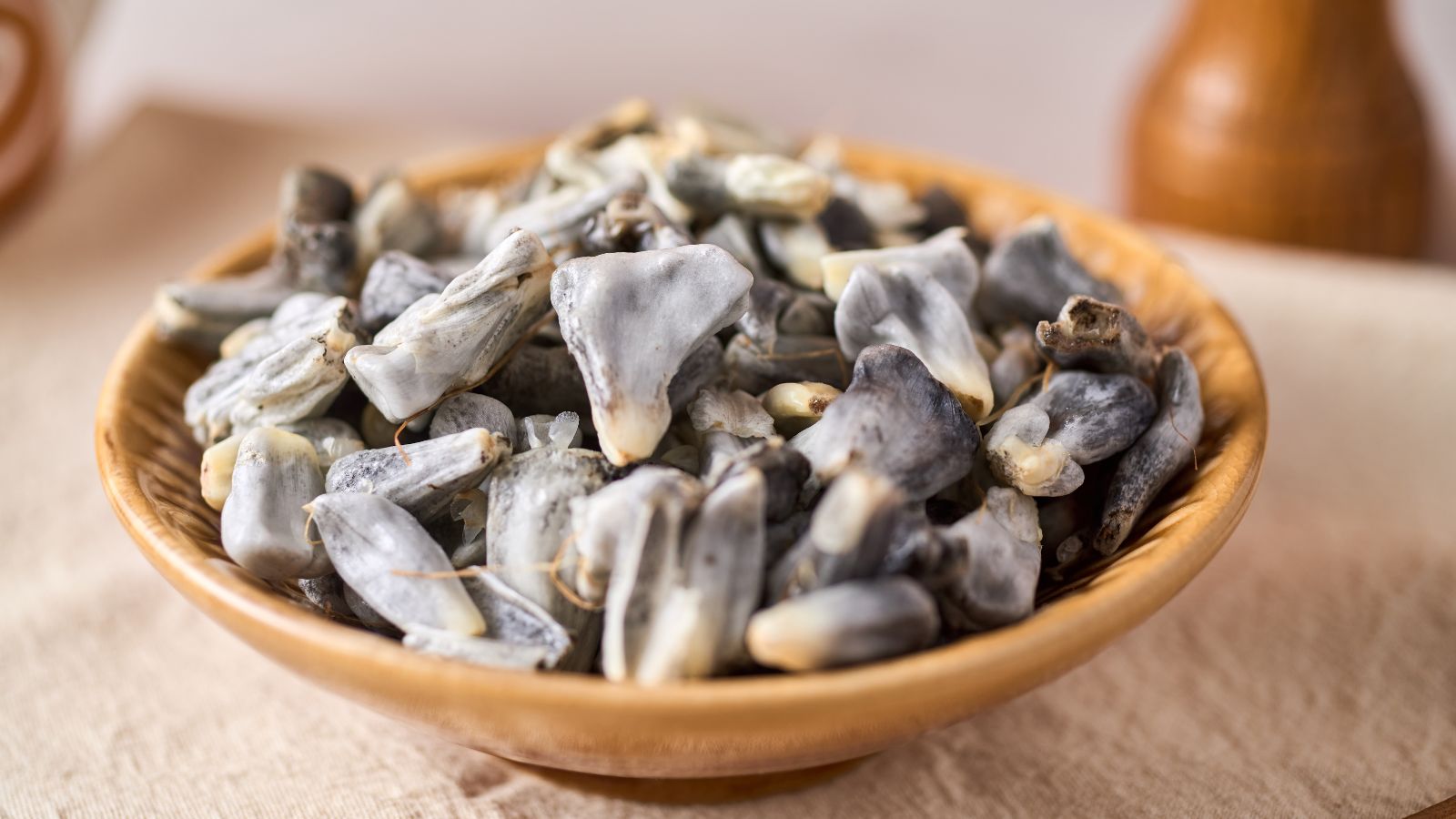
Another bizarre Mexican dish on this list is huitlacoche, also known as corn smut, which is a fungus that infects corn kernels. Its rich, earthy flavor, similar to mushrooms, is often used in quesadillas, soups, and tamales. It may sound disgusting, but many tourists have tried it without realizing it, and they usually love it.
Fugu: Japan’s Risky Pufferfish
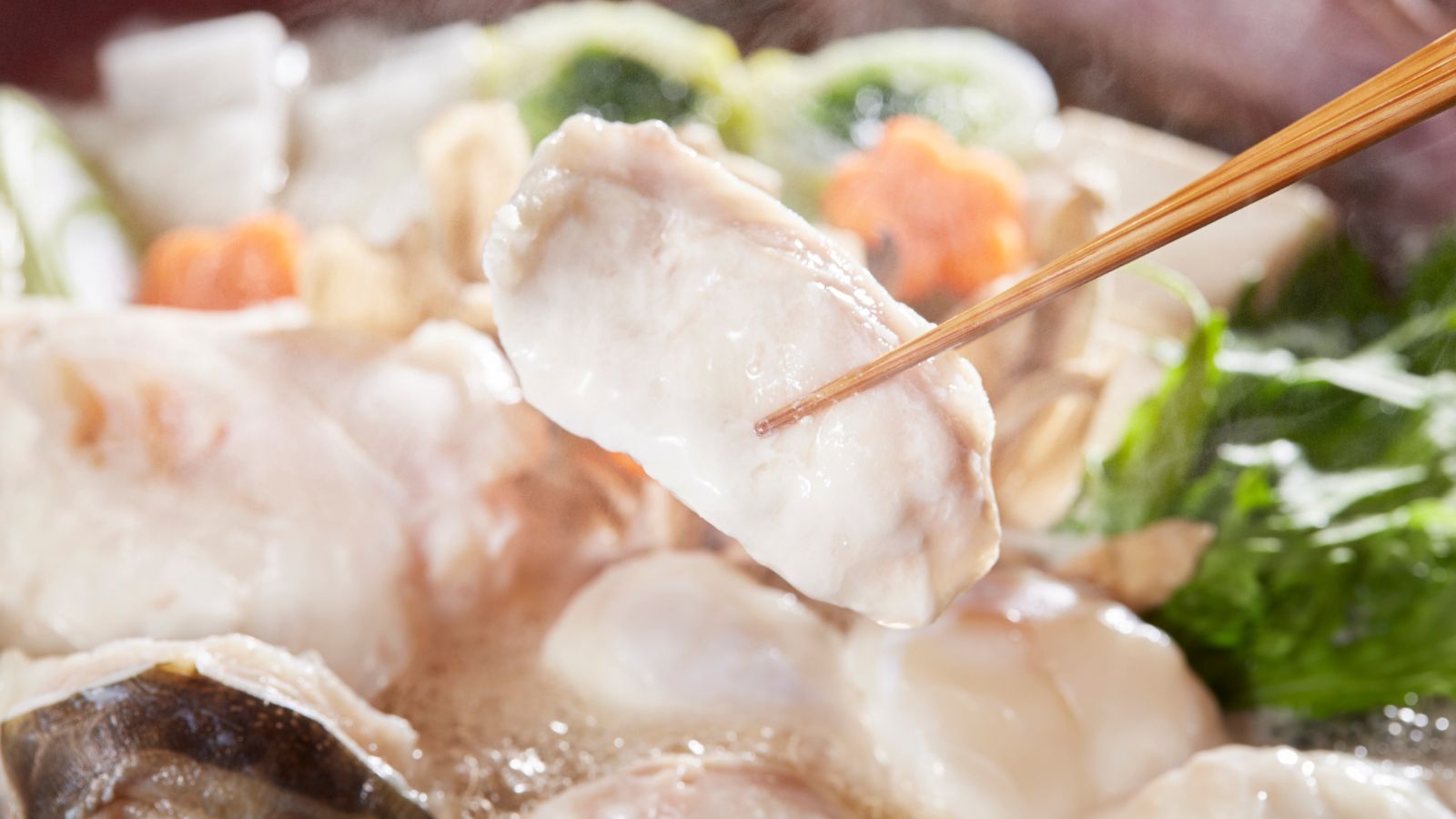
If you’re a real adrenaline junky, head to Japan for fugu, a dish made from pufferfish, notorious for its potential danger due to the fish’s tetrodotoxin. Only highly trained chefs can prepare it, ensuring that the toxic parts are removed. The flesh of fugu is mild, with a delicate texture, making it a prized dish for those seeking culinary thrills. Honestly, though, it’s probably not worth the risk.
Bird’s Nest Soup: A Delicacy from China

Bird’s nest soup is a traditional Chinese dish made from the nests of cave-dwelling swiftlets. The nests, composed of the bird’s hardened saliva, are believed to offer various health benefits. The resulting soup is valued for its delicate, gelatinous texture and is often consumed on special occasions, but we Brits can probably all agree that it’s not to our tastebuds.
Black Pudding: A British Blood Sausage
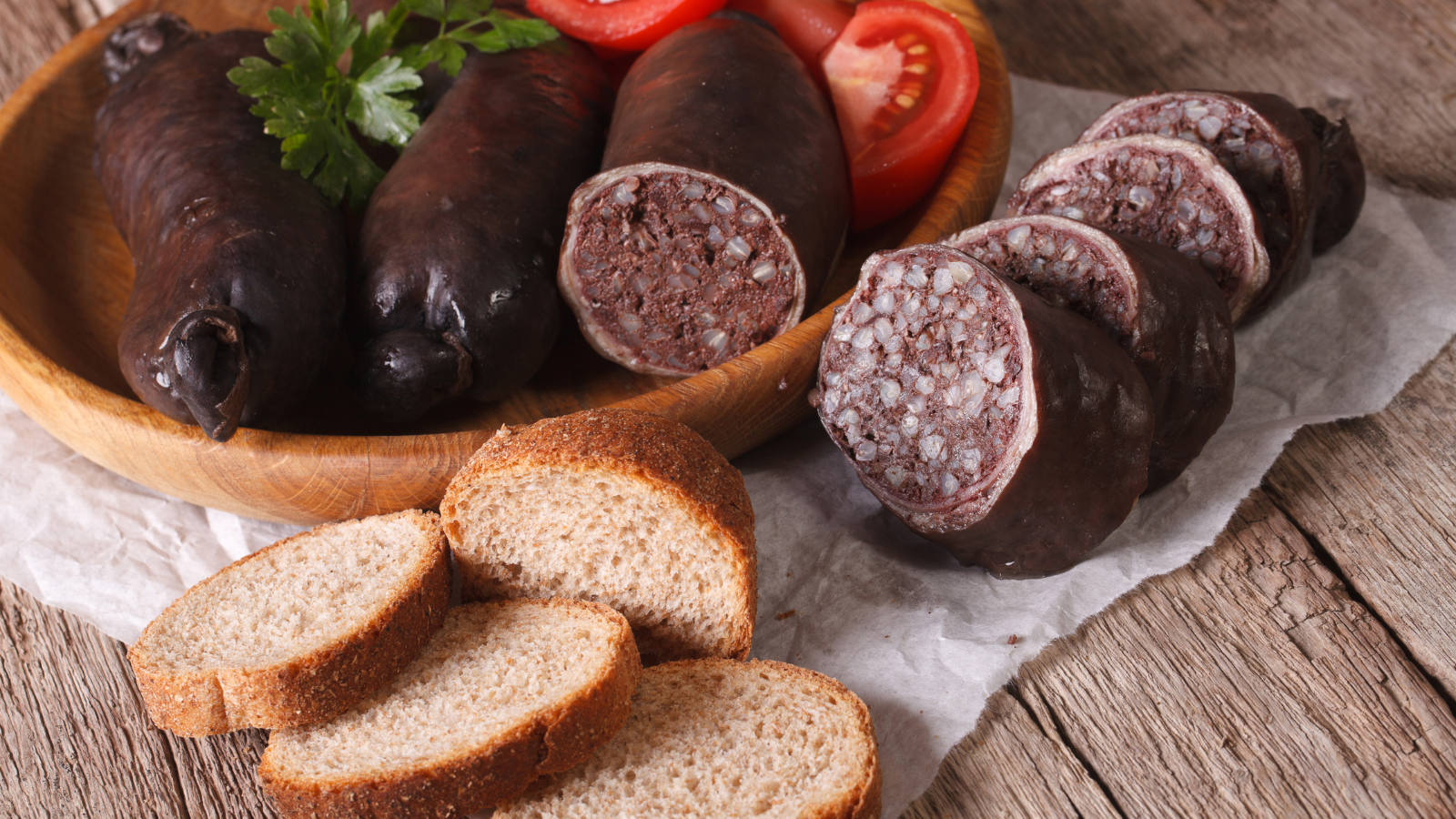
Here in the UK, most people love black pudding, a type of blood sausage made from pork blood, fat, and oatmeal. It has a rich, savory flavor and a firm texture and is often served as part of a traditional breakfast. It’s a classic example of a dish that doesn’t sound appealing at all but is actually very delicious.
Stinky Tofu: Taiwan’s Fermented Favorite
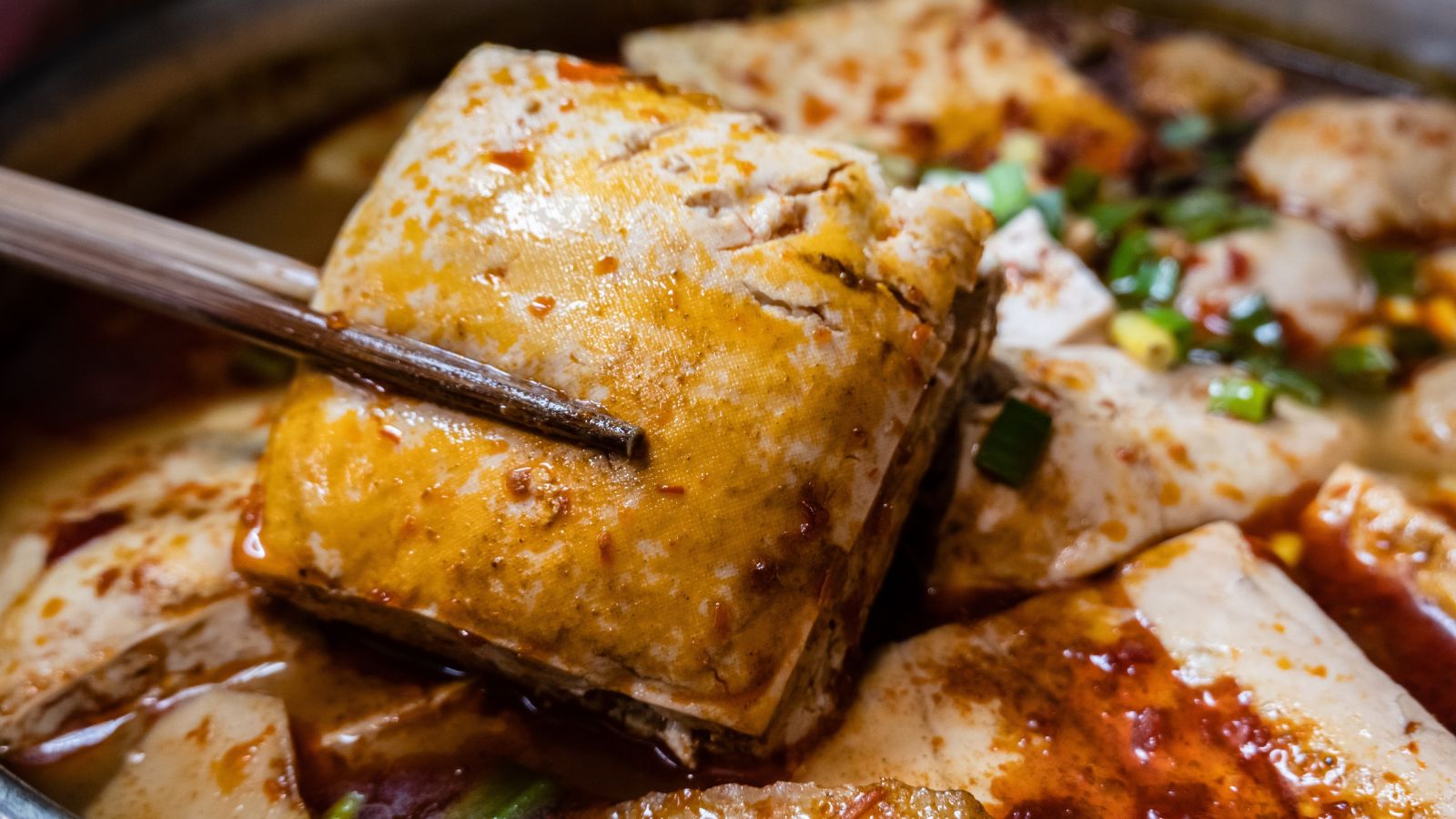
One of the most popular street foods in Taiwan is stinky tofu, recognized for its intense, pungent smell. The tofu is fermented in a brine of milk, vegetables, and meat before being deep-fried to create a crispy exterior. Despite the odor, stinky tofu has a mild, tangy flavor and a satisfying crunch.
Rocky Mountain Oysters: A Testicular Treat from the American West

If you’re particularly squeamish, turn away now; Rocky Mountain oysters, a dish made from bull or sheep testicles, are considered a delicacy in parts of the United States and Canada. Breaded and deep-fried, they have a tender texture and a mild, beef-like flavor. They’re often served as an appetizer, although personally, we think there’s nothing appetizing about eating sheep testicles.
Escargots: France’s Classic Snail Dish
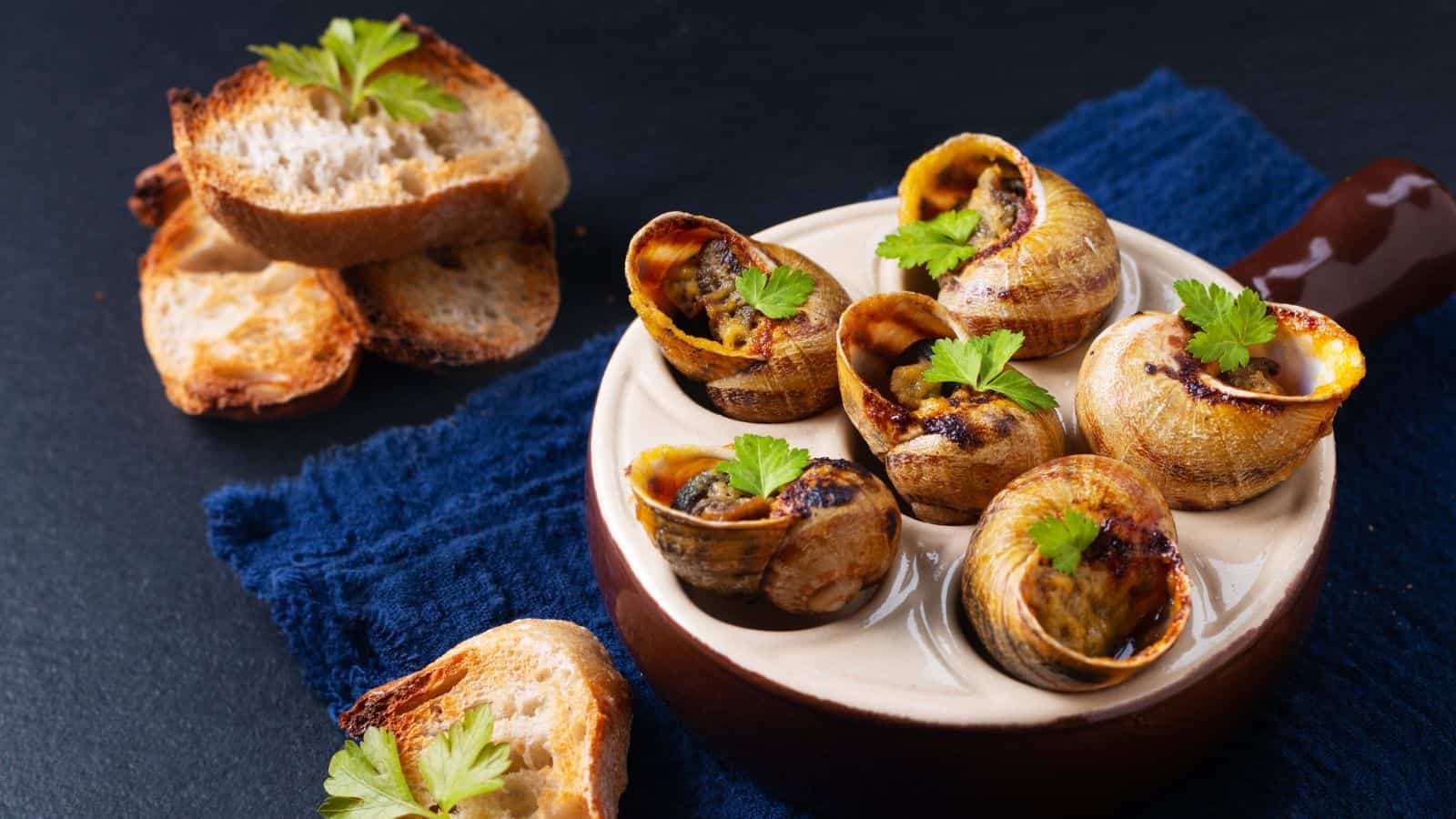
One of the most famous dishes on this list is escargots, or snails, a quintessential French delicacy typically prepared with garlic, butter, and parsley. The snails have a tender, slightly chewy texture, and a rich, buttery flavor, often served as an appetizer. If you can get past the gruesomeness, you’ll no doubt join the huge line of tourists who admit to enjoying it.
Shiokara: Japan’s Fermented Seafood
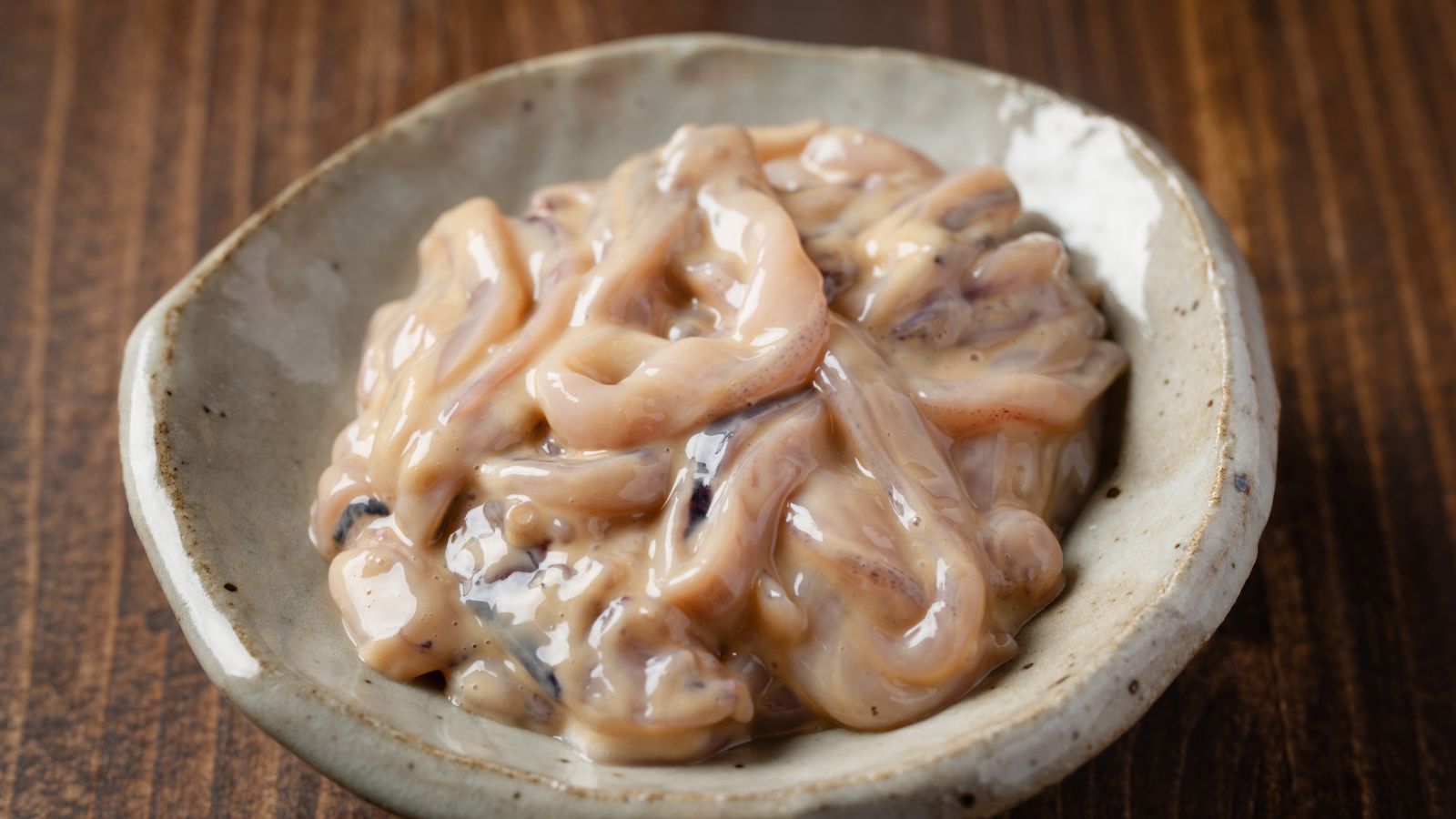
Another fermented favorite is shiokara, a Japanese dish consisting of seafood, usually squid, fermented in its own viscera. The result is a salty, intensely flavored paste that’s often eaten with rice or enjoyed as a snack with alcohol. It’s a dish that challenges the palate but is appreciated for its deep, umami-rich taste.
Cuy: Guinea Pig from South America
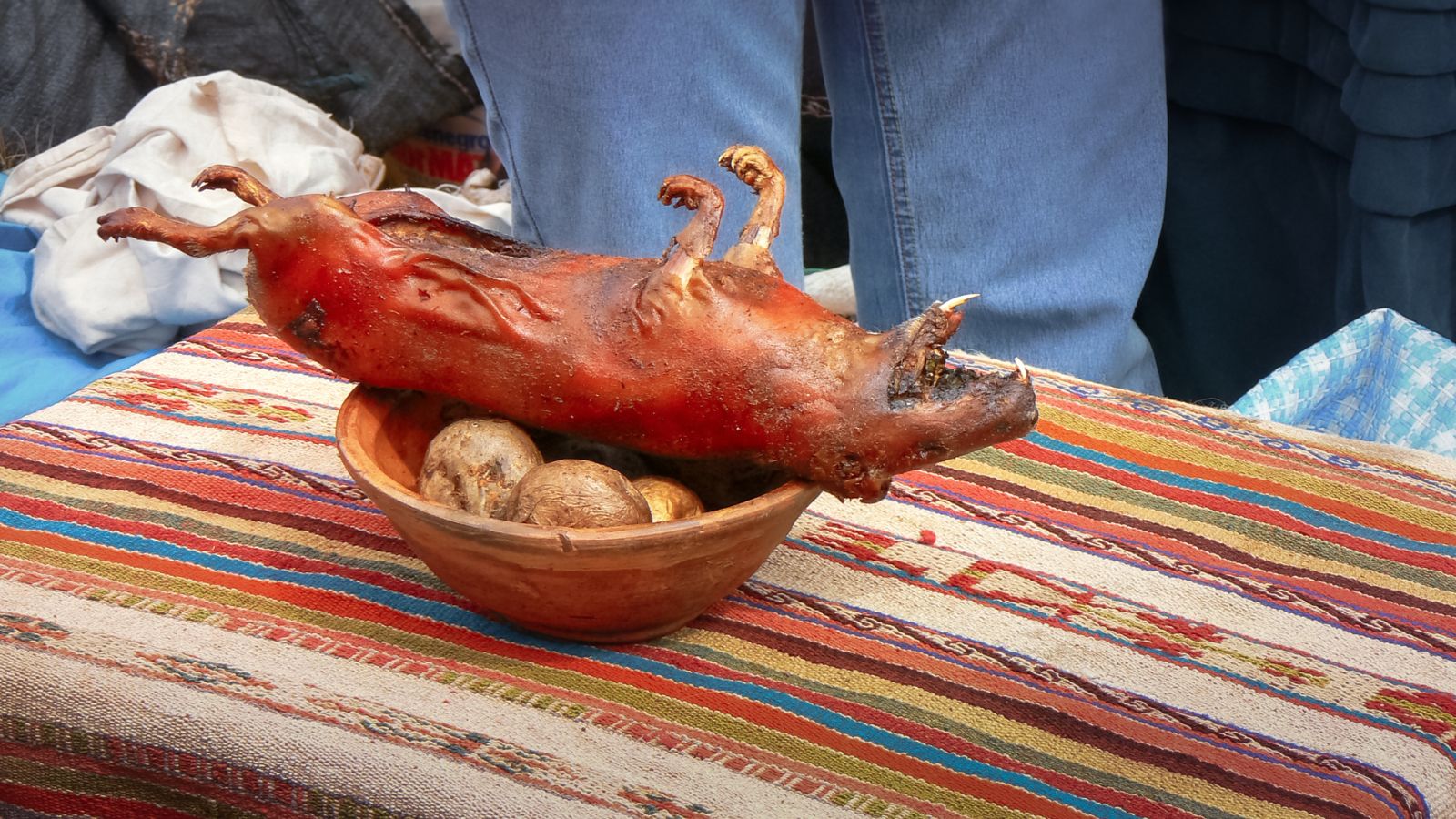
Most Brits couldn’t imagine eating a guinea pig, but in South American countries such as Peru, Ecuador, and Colombia, it’s very common. Guinea Pig or “cuy” is generally roasted or fried, offering a taste similar to rabbit or dark chicken meat. This dish is considered a delicacy and is commonly served during special celebrations, offering a different perspective on familiar meats.
Lutefisk: Norway’s Lye-Treated Fish
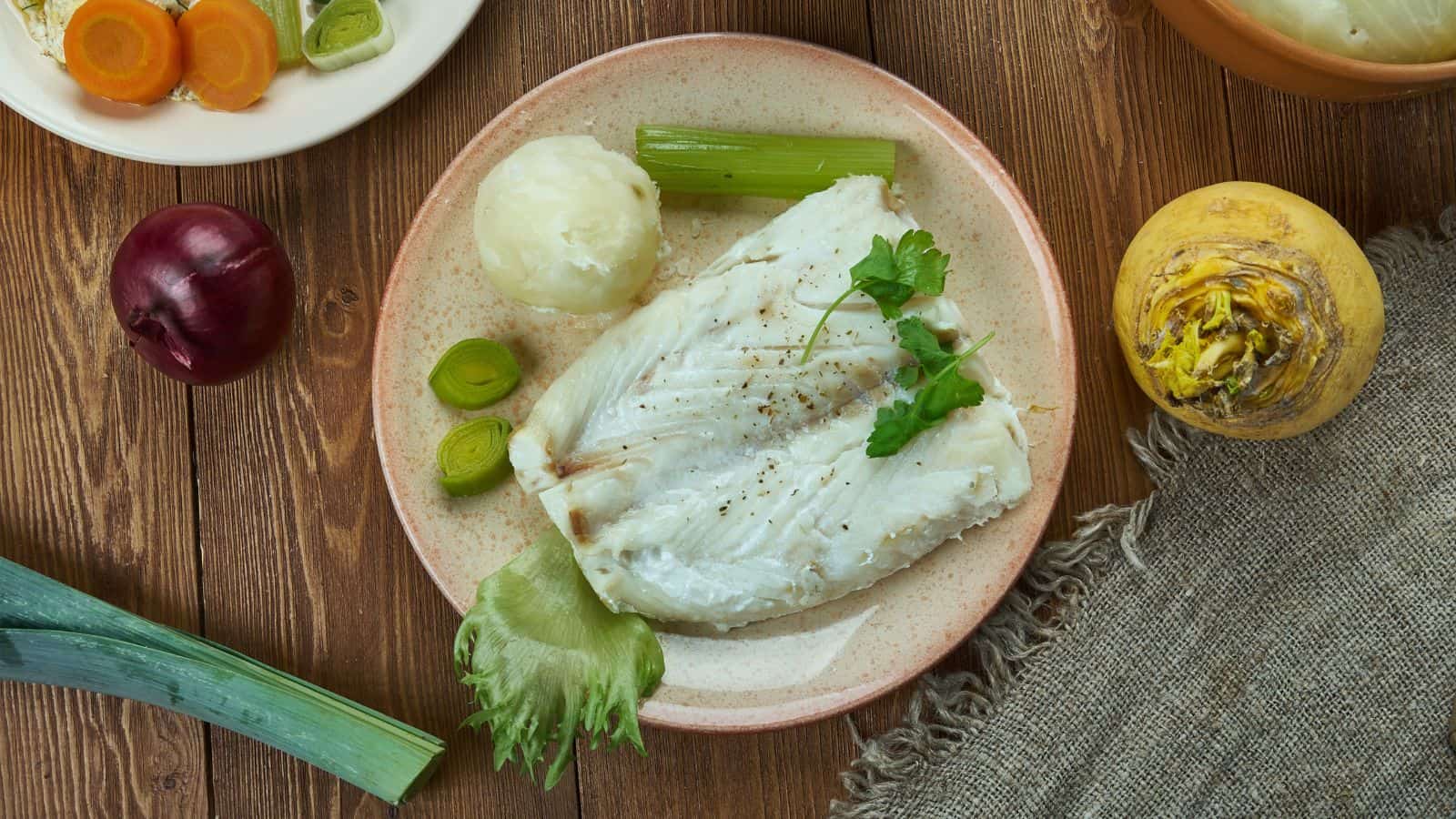
Another unusual eat worth trying at least once in your life is Norway’s lutefisk, a traditional dish made from dried whitefish, typically cod, that has been soaked in lye. This treatment gives the fish a gelatinous texture and a distinct, strong flavor, and is usually served with potatoes, peas, and bacon. Honestly, that doesn’t sound too bad.
Khash: A Hearty Soup from Armenia
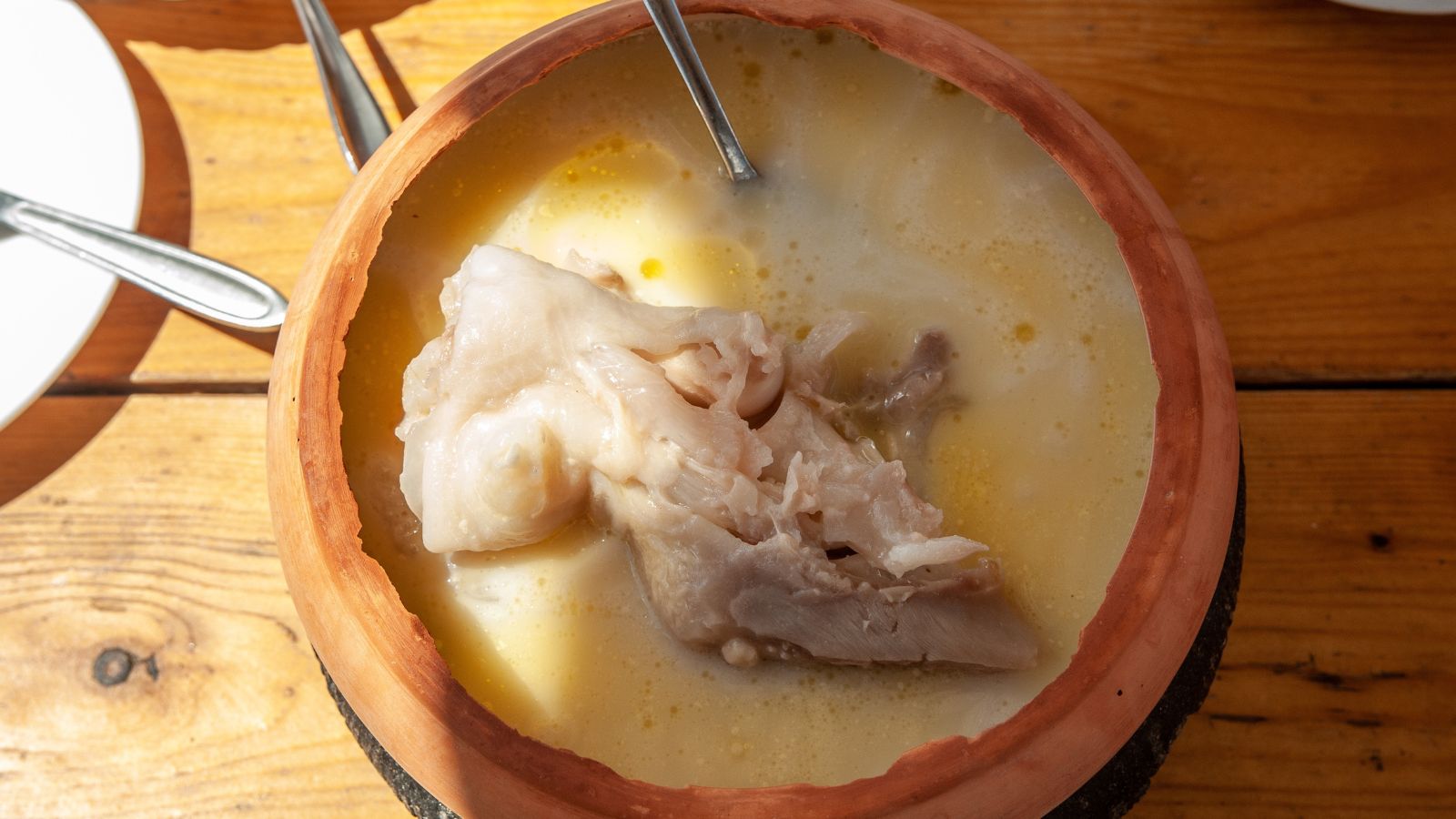
If you ever find yourself in central Asia, pop by Armenia for some khash, a traditional soup made by boiling cow or sheep feet for hours, creating a rich, fatty broth with a gelatinous texture. Often enjoyed during the cold winter months, khash is typically served with garlic, vinegar, and lavash bread. This dish is meant to be shared, reflecting its communal roots, so it would be rude to decline it when visiting, even if it makes your stomach turn.

